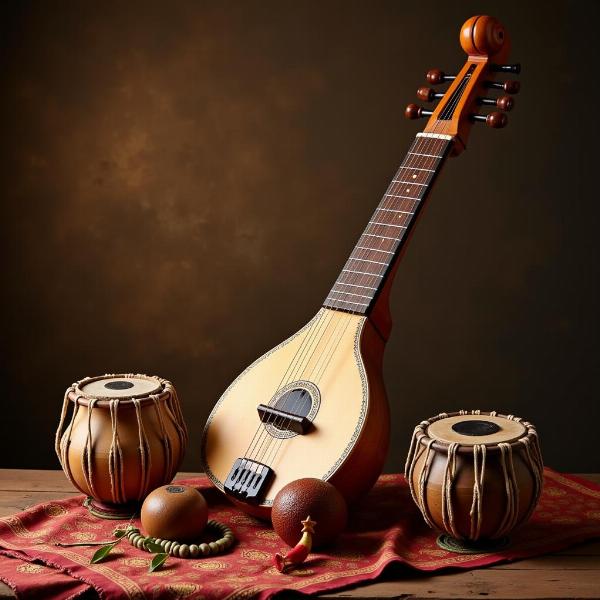Classic refers to something of high quality, timeless, and widely recognized as a standard of excellence. Understanding the meaning of “classic” in Hindi can be nuanced, as it encompasses several related concepts. What does it truly mean when something is labeled a classic, and how does that translate within the rich tapestry of Hindi language and culture? Let’s delve into the various interpretations and explore how “classic” finds its expression in Hindi.
Exploring the Hindi Translations of “Classic”
The most common Hindi translations of “classic” include “क्लासिक” (klaasik), “उत्कृष्ट” (utkṛṣṭ), and “श्रेष्ठ” (shreshth). While “क्लासिक” (klaasik) is a direct transliteration, “उत्कृष्ट” (utkṛṣṭ) implies excellence and “श्रेष्ठ” (shreshth) denotes superiority. Each word carries slightly different connotations, enriching the understanding of “classic” in a Hindi context. “उत्कृष्ट” (utkṛṣṭ), for instance, might be used to describe a classic piece of literature, while “श्रेष्ठ” (shreshth) could refer to a classic style of clothing. The choice of word depends on the specific context and the nuance one wishes to convey.
Classic in Different Contexts: Literature, Cinema, and More
The word “classic” transcends various domains. In literature, it signifies works that have endured the test of time, like the timeless epics of the Ramayana and Mahabharata. These stories, deeply ingrained in Indian culture, are considered classic examples of storytelling and moral philosophy. Similarly, in cinema, classic films hold a special place in the hearts of audiences. Movies like “Mughal-e-Azam” and “Sholay” are revered for their impactful narratives, memorable characters, and enduring popularity.
What Makes Something a Classic?
What truly elevates something to the status of a classic? It is a combination of factors, including enduring popularity, artistic merit, cultural significance, and influence on subsequent works. A classic piece of art, whether it be a novel, a film, or a musical composition, resonates with audiences across generations. It speaks to universal themes and emotions, transcending the limitations of time and cultural boundaries.
The Timeless Appeal of Classics
Classic works often hold a mirror to society, reflecting the values, beliefs, and aspirations of a particular era. They offer insights into the human condition and provide a lens through which to understand the past. Moreover, classics continue to inspire and influence contemporary artists, shaping the cultural landscape and contributing to the ongoing evolution of art forms.
 Classic Indian Music
Classic Indian Music
How do you say “a classic example” in Hindi?
“A classic example” can be translated to Hindi as “एक उत्कृष्ट उदाहरण” (ek utkṛṣṭ udaharan) or “एक आदर्श उदाहरण” (ek adarsh udaharan). Both phrases convey the sense of a prime or ideal example that perfectly illustrates a concept or principle.
Conclusion
The meaning of “classic” in Hindi is multifaceted, reflecting the richness and depth of the language and culture. From literature and cinema to art and music, the concept of “classic” encapsulates the essence of timelessness, excellence, and enduring impact. Understanding these nuances allows for a deeper appreciation of the cultural significance and lasting legacy of classic works in the Hindi-speaking world. Do you have a favorite classic Hindi film or book? Share your thoughts!
FAQ
- What is the most common Hindi word for “classic”? While “क्लासिक” (klaasik) is a direct transliteration, “उत्कृष्ट” (utkṛṣṭ) and “श्रेष्ठ” (shreshth) are commonly used to convey the meaning of “classic” depending on the context.
- What are some examples of classic Hindi literature? “Godaan” by Premchand, “Madhushala” by Harivansh Rai Bachchan, and the works of Kabir are considered classic examples of Hindi literature.
- How do classic works impact contemporary art? Classic works serve as inspiration and influence for contemporary artists, shaping the evolution of art forms and contributing to the cultural landscape.
- Why are classic works important? Classic works offer insights into the past, reflect cultural values, and address universal themes that resonate across generations.
- What is the difference between “उत्कृष्ट” (utkṛṣṭ) and “श्रेष्ठ” (shreshth)? While both words imply high quality, “उत्कृष्ट” (utkṛṣṭ) emphasizes excellence, while “श्रेष्ठ” (shreshth) denotes superiority.
- Can you provide a Hindi translation for “This is a classic case”? “यह एक उत्कृष्ट मामला है” (yah ek utkṛṣṭ mamla hai) is a suitable translation for “This is a classic case.”
- How do I identify a classic piece of art? A classic piece of art typically demonstrates enduring popularity, artistic merit, cultural significance, and influence on subsequent works.
Meaning-Hindi.in is your trusted partner for professional Hindi translation services. We specialize in various translation domains, from business and legal documents to technical manuals and website localization. Our team of expert Hindi linguists ensures accurate and culturally sensitive translations that meet your specific needs. Contact us today at [email protected] or call us at +91 11-4502-7584. Meaning-Hindi.in is here to help bridge the language gap and connect you with the Hindi-speaking world.